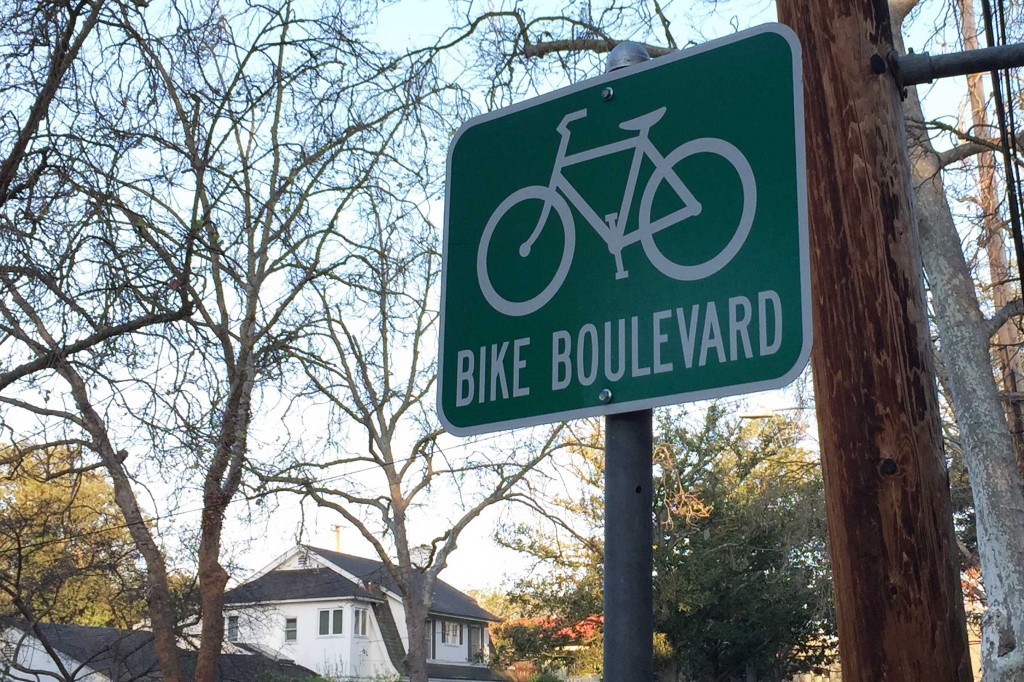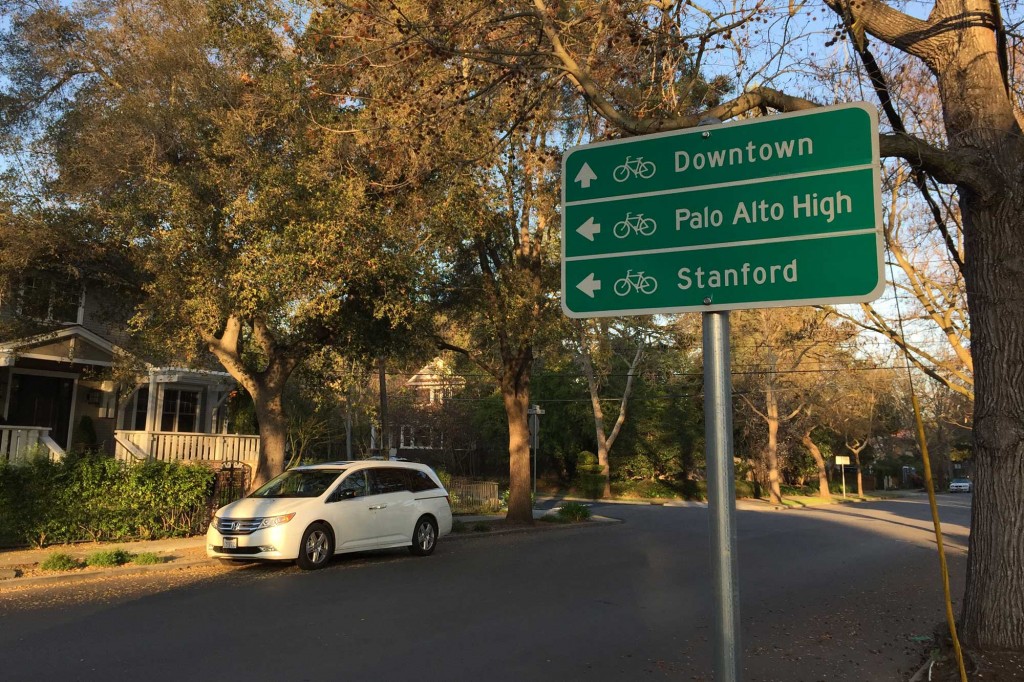Palo Alto approved the first section of an expansive bicycle pathway network to be completed over the next three decades.
Council members unanimously approved the Maybell and Churchill sections of the Bicycle Boulevard, the city’s name for the 24 proposed bike and pedestrian projects, at the Palo Alto City Council meeting Jan. 20. This plan includes miles of new bike lanes and separate roadways for cyclists throughout the city including a $10 million bike bridge over Highway 101.

However, not all Palo Alto residents support the city’s bike plans. Some locals are concerned the additional bike paths will worsen traffic and the new road markings won’t fit into the context of residential neighborhoods.
The Bicycle Boulevard was announced in 2010 as part of the Bicycle and Pedestrian Transportation Plan, an effort to lessen traffic and create safer routes around Palo Alto for cyclists and pedestrians. The Maybell and Churchill sections were the first segments to be brought to the city council and approved.
“We’re beginning to change the way in which bicycle and pedestrian activity is being looked at within the region,” Jaime Rodriguez, Palo Alto’s former chief transportation official told council members.
Rodriguez abruptly resigned one week after the meeting after more than four years in his position. Rodriguez never commented on reasons for his resignation, but City Manager James Keene told Peninsula Press in an email: “Losing Jaime is a loss for our city. We remain completely committed to our ambitious Bike and Pedestrian Plan.” Planning Director Hillary Gitelman says three transportation consultants are currently working on the projects while the city looks for another chief transportation official.
Over the next 30 years, bike paths will continue to complement the existing roadways. According to the Bicycle Boulevard Program Summary, the Maybell and Churchill pathways will create safer transportation for cyclists, specifically the Terman Middle and Gunn High school students.
More than 30 residents — some dressed in bright-yellow reflective bike jackets — attended the January meeting at which Rodriguez presented the plans for the Bicycle Boulevard. Advocates hope the improvements will more clearly direct car traffic onto different roads than bike traffic.
Plans for the Churchill Avenue section include raised speed tables — raised humps with a flat section in the middle — and a bike lane exit ramp to separate bicycle traffic from auto traffic at the right turn into Gunn High School.
The improvements to the Maybell section of the plan include the addition of greenback sharrows — green arrows to remind drivers to share the road with cyclists — and three speed tables to slow car traffic.
Proponents of the new pathways hope the changes will create a safer route to school for children and will lessen traffic during peak commute hours. Diane Li, a Palo Alto resident since 1996, said after the meeting: “For as much money as we pay to live here we should have a better system.”

But Palo Alto resident Bob Moss thinks these pathways are putting too much emphasis on bicyclists and not enough on pedestrians. One of the proposed plans is to put greenback sharrows on Laguna Avenue, but he says when he takes walks on Laguna he sees far more pedestrians than cyclists. Moss told Peninsula Press: “It’s nice to have bicycle facilities, but the primary use of the streets is for people to drive and to walk.”
Additionally, opponents worry additional bike lanes will compound already paralyzing traffic downtown, and they say greenback sharrows are jarring to the eyes. Councilman Eric Filseth responded to these comments saying, “I’m surprised there’s as much discussion of the sharrows as there is because it’s a piece of paint.”
The greenback sharrows were removed from the Bryant Street and Old Palo Alto parts of the plan because residents felt they did not fit into the context of the neighborhood. Additionally, other members of the community called the heavy signage throughout Palo Alto “eye litter.”
Councilman Greg Schmid commented on the removal of the greenback sharrows from Bryant Street and Old Palo Alto and said he recognizes that community members don’t like the sharrows. However, he also recognizes that it is important for everyone in town to be aware of the growing number of bicyclists.
Palo Alto is currently the second leading city in the nation for bike travel per capita behind Boulder, Colo. In Palo Alto, 8.8 percent of the 66,638 residents commute by bike. In Colorado, 11.1 percent of the 103,163 Boulder residents commute by bike.
But Councilman Pat Burt said Palo Alto should have a higher biking commuter percentage than Boulder. “They are hillier and their high tomorrow is supposed to be 28 degrees and snowy. We are flat with great climate so we really should be a more bike-friendly community.”
According to Gitelman, construction on the Maybell and Churchill sections of the plan will begin before the end of 2015. The dates and agendas for upcoming meetings regarding the following 22 Bicycle Boulevard initiatives can be found on the City of Palo Alto website.
